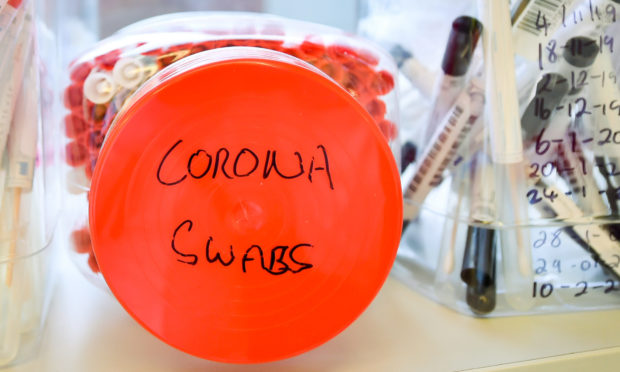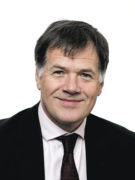As I write this there is almost a feeling of calm. We are getting our procedures and policies and we are far more attentive to social distancing.
Yet there is a feeling as if we are looking out on a bay when a tsunami is awaited – the water has run out and we are waiting for the inevitable surge as it returns, hoping our preparation is enough.
The first case was announced in Scotland on Sunday March 8 and over the following week the number rose to 16, with 206 cases across the UK and the first two deaths. Efforts at containment possibly delayed the inevitable spread of the disease.
I have little experience of dealing with a pandemic. Prior to widespread flu vaccination, I had experienced the heavy workload that a bad flu season could bring, long days and absent colleagues. But the idea that this coronavirus could infect so many of us and leave many of us very ill was new. Yes, I had sleepless nights when I considered the possibility of what lay ahead. I still do.
During that first week I was asked to wash my hands by the daughter of an elderly patient on entering and leaving her house. I regret to say I asked if that was necessary.
It now seems not merely an entirely sensible suggestion but rather the most obvious, basic thing any of us can do. That same week, my practice began to plan for the situation to worsen. We received our first surgical masks and started to plan how we would work effectively with staff off sick and also make it possible for people to do useful work from home.
When I arrived at work on Monday March 16 so much had changed. We heard of the first Scottish coronavirus death and the first two confirmed cases in Highland. My first phone inquiry was from a patient asking about the safety of his plans to travel to Italy and China.
I heard from a patient who was anxious to be tested, having developed symptoms but with no history, suggesting coronavirus was unlikely. It was hard to explain that he did not fit the criteria and that no test was possible.
Having had almost no coronavirus calls the previous week, our staff spent most of the day fielding inquiries.
It turned into a week of frantic activity. We met that afternoon to dust off our infection contingency plans, written in 2009 at the time of the swine flu pandemic. Encouragingly, they remained sound. We clarified how we would deal with inquiries, screen people coming in and what we might do when we inevitably moved from containing the infection to reducing its spread.
By Thursday, our plans for containment were redundant and we activated our plans for the delaying phase. No appointments without being screened by our staff on the phone and anyone with relevant symptoms was to be phoned back by a doctor before being seen. High-risk patients were to enter by a side door.
It feels very odd, wearing a mask, gloves and gown as I call patients through. I worry that the children might be scared. It is also difficult to feel I am being properly understood, as a significant amount of non-verbal communication is lost behind the mask. It is also sweaty and uncomfortable.
We fear we will be swamped by demand. How can we possibly provide the care our patients will desperately need?
And so to this week, which began with four of our 10 doctors off, either ill or in self-isolation because of household contacts. We delivered iPads to enable these doctors to help us with phone calls and paperwork.
Everything has moved on with such speed we are all struggling to keep up.
My practice now has clear zones – the red zone where we see patients with coronavirus symptoms, the amber zone where other patients are seen and a green zone that is for staff only.
Masks, gloves and aprons are now used for all patient contact including visits and for staff when they are manning the reception desk.
This week has seen us increasingly pulling back from our routine work. We really don’t want patients gathering in our practice, leaving us with the nagging worry that people with other ongoing conditions may start to suffer and that we may be at risk of missing other serious problems. Some visiting nurses and social workers have been told to stop visiting patients.
We’ve learned that stockpiling isn’t just a supermarket problem. Patients who have not had inhalers for years are requesting them in increasing numbers and pharmacists are running out of stock. We’re asked for prescriptions for paracetamol as people can’t find them in the shops, adding to the workload of us, our staff and pharmacists.
On Friday staffing arrangements grew more complex. New guidance stated that individuals who qualify for annual flu vaccinations should be in the high-risk category and moved from some public-facing jobs.
I’m one of them. It seems all wrong that my younger colleagues are shouldering the face-to-face work with suspected coronavirus patients. That should be my role.
Dr Miles Mack is a GP in the Highlands and former chairman of the Royal College of General Practitioners Scotland











